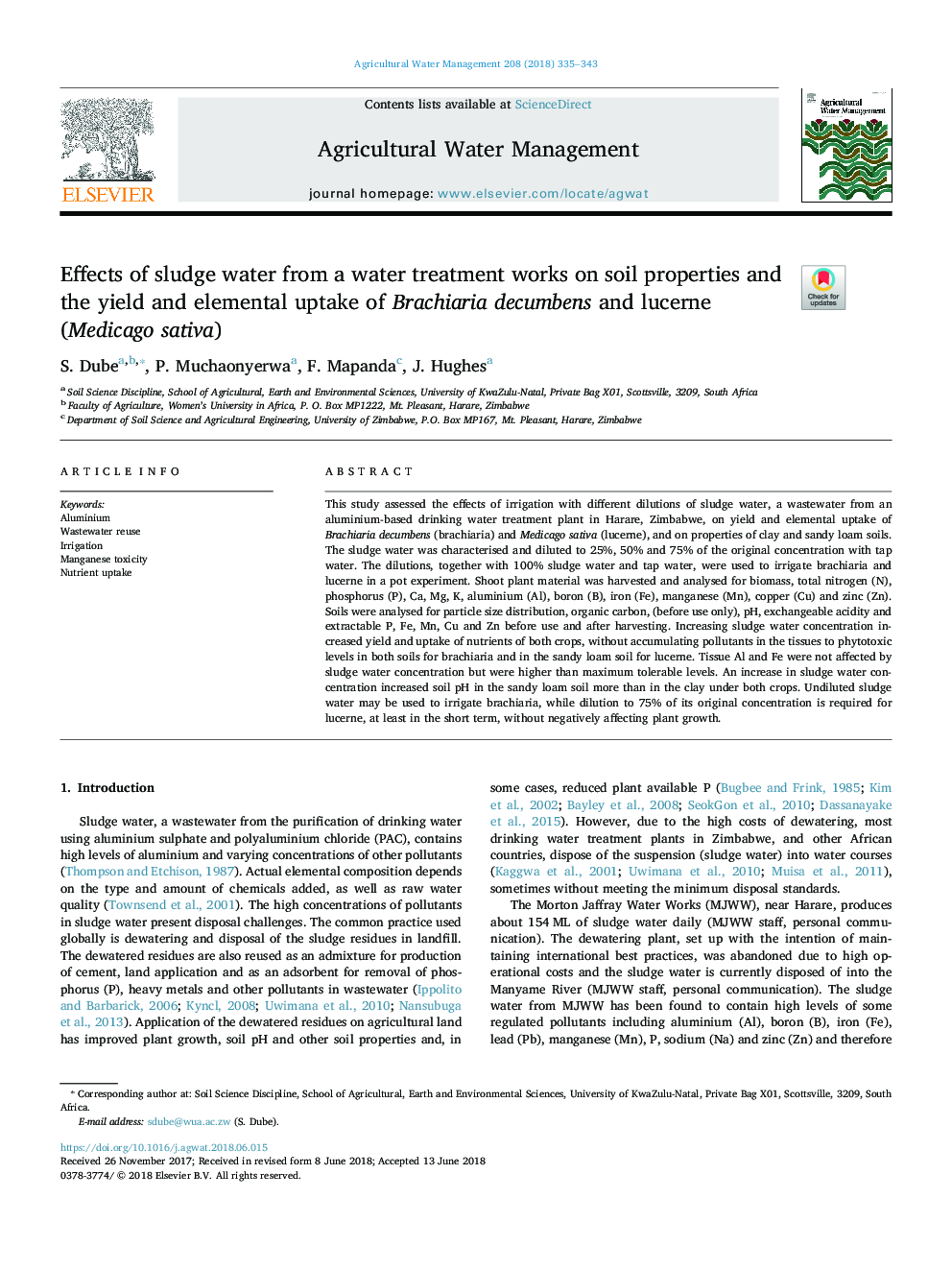| Article ID | Journal | Published Year | Pages | File Type |
|---|---|---|---|---|
| 8872800 | Agricultural Water Management | 2018 | 9 Pages |
Abstract
This study assessed the effects of irrigation with different dilutions of sludge water, a wastewater from an aluminium-based drinking water treatment plant in Harare, Zimbabwe, on yield and elemental uptake of Brachiaria decumbens (brachiaria) and Medicago sativa (lucerne), and on properties of clay and sandy loam soils. The sludge water was characterised and diluted to 25%, 50% and 75% of the original concentration with tap water. The dilutions, together with 100% sludge water and tap water, were used to irrigate brachiaria and lucerne in a pot experiment. Shoot plant material was harvested and analysed for biomass, total nitrogen (N), phosphorus (P), Ca, Mg, K, aluminium (Al), boron (B), iron (Fe), manganese (Mn), copper (Cu) and zinc (Zn). Soils were analysed for particle size distribution, organic carbon, (before use only), pH, exchangeable acidity and extractable P, Fe, Mn, Cu and Zn before use and after harvesting. Increasing sludge water concentration increased yield and uptake of nutrients of both crops, without accumulating pollutants in the tissues to phytotoxic levels in both soils for brachiaria and in the sandy loam soil for lucerne. Tissue Al and Fe were not affected by sludge water concentration but were higher than maximum tolerable levels. An increase in sludge water concentration increased soil pH in the sandy loam soil more than in the clay under both crops. Undiluted sludge water may be used to irrigate brachiaria, while dilution to 75% of its original concentration is required for lucerne, at least in the short term, without negatively affecting plant growth.
Related Topics
Life Sciences
Agricultural and Biological Sciences
Agronomy and Crop Science
Authors
S. Dube, P. Muchaonyerwa, F. Mapanda, J. Hughes,
